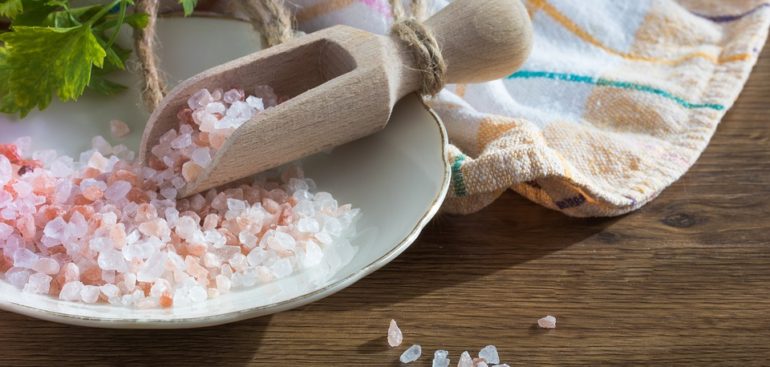Sodium (salt) plays a significant role in balancing fluids in the body and is an important constituent of nerves. In addition, it is needed for optimal muscle contractions.
The general outlook on this mineral is often a negative one due to the possible elevation in blood pressure in sedentary persons.
Although the average sedentary individual requires little sodium intake, for an active individual or an athlete it’s a different story.
Recommended Daily Allowance
The RDA states that the average person should consume less than 2300 mg of salt per day. It is estimated that on average, people consume anywhere between 8 to 12 grams of table salt daily.
Table salt contains 40% of sodium chloride, so that would be between 3200 to 4800 mg of sodium.
Prolonged daily intake of excess sodium can lead to what is viewed as age related high blood pressure in sedentary individuals. This can be avoided by reducing sodium intake, while increasing potassium intake.
While reducing overall sodium intake may be sound advice for the inactive person, athletes or active individuals have a special need for replenishing lost sodium stores.
Sodium loss in sweat
The amount of sodium in sweat ranges between 600 mg to 1200 mg sodium per litre of sweat.
If you lose one litre of sweat per hour for four hours of activities (cardio, walking, resistance training, sports, etc.) your sodium losses become significant (2400 mg to 4800 mg).
Therefore, an athlete’s sodium intake must be higher in order to replenish the body’s sodium stores for optimal health and performance.
Fluid replacement with solely water can lead to incomplete re-hydration. Furthermore, possible complications such as hyponatremia, decreased performance, heat cramps, or other heat-related illness can arise. There is significant individual variation in sodium loss during activity. In some the losses can be replaced by normal dietary intake, whereas in others the losses can be dramatic and increased dietary intake is essential. (1)
What’s the best or healthiest way to increase sodium intake?
My favorite way is through sea salt or Himalayan pink salt which provide some additional minerals as well.
Note* – Sodium becomes even more important when you are on a fat loss phase. Eating in a caloric deficit with limited carbohydrates will reduce strength and performance in the gym. Adding extra salt to your diet will help maintain workout intensity, muscle contractions and pumps in the gym.
Final Words
Similarly to carbohydrates, sodium must be put to good use through intense training and sweat.
Sodium intake must be higher in active individuals to maintain good health and increase performance.
If you are on a consistent rigorous training program with the goal to increase your strength, muscle mass or fat loss, pay attention to your sodium intake. An athlete consuming 10 to 15 grams of salt per day is quite normal.
For proper hydration, increase your water intake with your sodium.
Primal Breed is committed to providing you effective personal training in Toronto, helping you lose unwanted weight permanently and build lean muscle for life.


